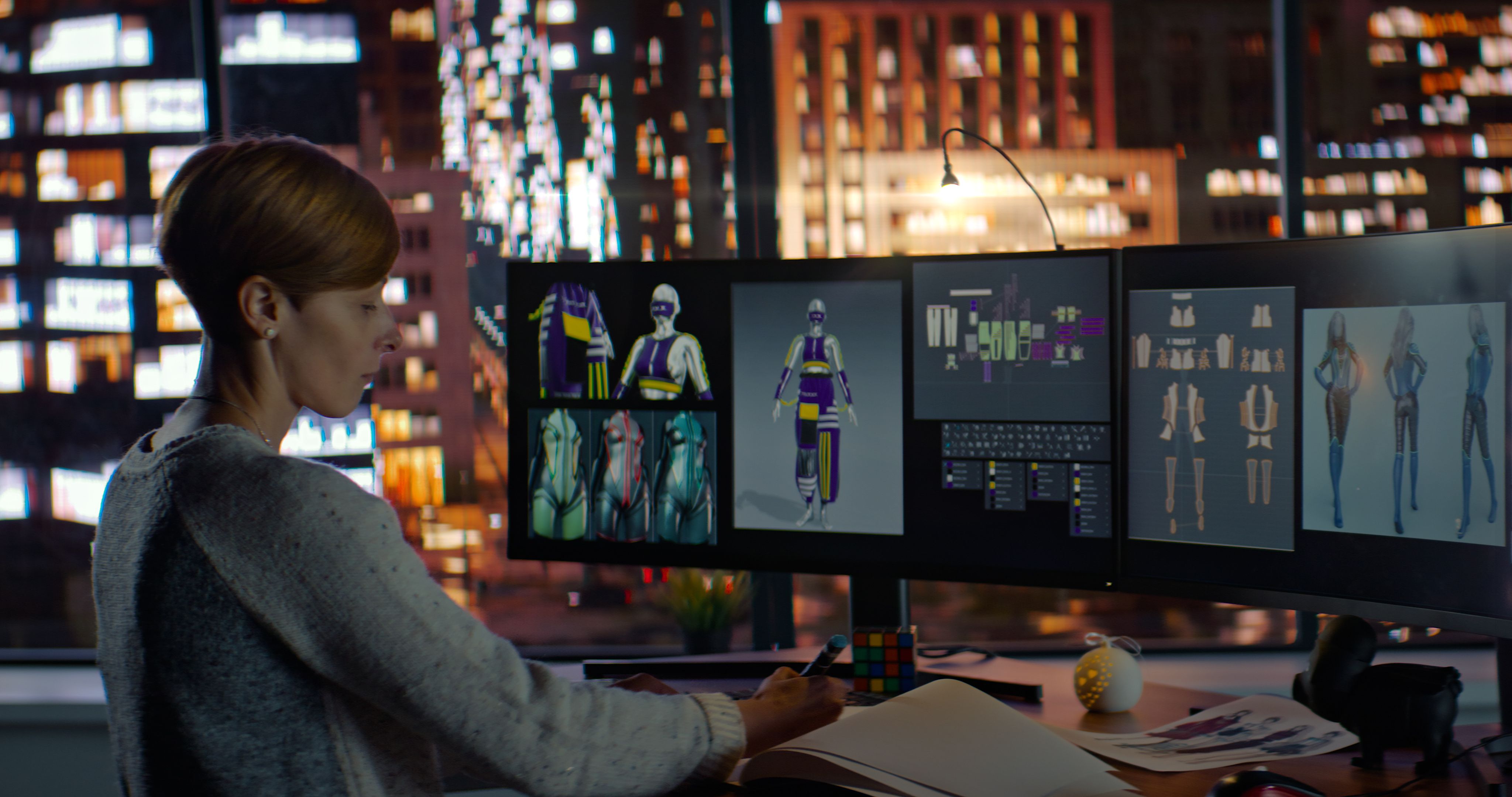The recent pandemic has forced businesses all over the world to change the way they operate. Many companies have switched to a remote work model, while others have adopted a hybrid approach that combines remote and in-person work. This event is essential to discuss the future of work, a trend in businesses and HR management that create a convergence between technology, automation via artificial intelligence (AI), parity, and inclusion to create equality and make well-being in the workplace real. As we continue to adapt to this new normal, one thing is certain: the future of work will integrate immersive technologies and virtuality. And this shift presents a unique opportunity to close the gender gap in the workplace. In this blog post, we'll explore how VR is changing the landscape of social relations in the workplace and how businesses can use virtual reality to promote gender parity and inclusion in the workplace. We'll also provide tips on how to utilize VR to promote female leadership in your company.
Virtual Reality and Gender Parity in the Workplace: How Are They Connected?
Many people are familiar with the term "virtual reality," but fewer understand how it works.
In its simplest form, virtual reality is a computer-generated environment that can be interacted with in a realistic way. VR is often used in gaming applications but has several potential workplace applications.
For example, through virtual reality, employees can conduct remote workplace meetings or create hybrid workplaces that allow people to move around freely without leaving the office. Additionally, VR can potentially increase gender parity in the workplace by allowing employees to experiment with different genders and appearances.
VR has the potential to increase inclusion in the workplace by making it possible for employees with diverse backgrounds and abilities to interact with each other in realistic ways.
Moreover, virtual reality allows for the performativity of gender, so employees can choose their gender just if they want to. Ultimately, VR can potentially change how we work and live, and this includes working with an identity we're comfortable with.
Utilizing Virtual Reality to Improve Parity and Close the Gender Gap
The future of work is increasingly looking like a hybrid of in-person and remote interactions, and virtual reality (VR) will play an important role in making this possible. For example, VR can be used to create virtual workspaces that simulate the experience of being in a real office, making it possible for employees to work remotely without sacrificing face-to-face interactions. In this blog post, we tell you how this happens.
Additionally, VR can be utilized for business meetings, allowing employees to attend from anywhere in the world. In remote meetings that require virtual reality technologies, women can have equal opportunities in corporate decision-making and deepen their leadership.
As VR technology grows, it has the potential to eliminate the gender gap by providing everyone with equal employment opportunities, discussing the gender pay gap, and how to close it. Some companies are already using VR to improve gender parity, and as VR becomes more widespread, more businesses will likely follow suit.
Ultimately, VR has the potential to change the way we work, making it easier for everyone to participate in the workforce and creating a more equitable future for all.
What Challenges Does Virtual Reality Present for Achieving Gender Parity in the Workplace?
VR also presents challenges to achieving gender parity in the workplace. First, VR can be an isolating experience, making it difficult for women to build the relationships and networks essential for advancement in many organizations.
In this situation, it is important to promote collaboration in the workplace from the recruiting and onboarding. In particular, you can take onboarding to create a corporate culture and spread values concerning gender equity and inclusion.
Second, VR technology is often designed and marketed with a male audience in mind, making it difficult for women to find virtual content relevant to their interests and needs. However, you can reverse this narrative by encouraging women at your company to use virtual technologies.
Finally, VR can create an environment where sexual harassment and other forms of discrimination are more likely to occur. In this case, it is essential to use virtual reality to foster a collaborative and respectful workforce that appreciates women's role in companies. In addition, it would be significant to create anti-harassment policies to attend to employees when aggressions emerge.
While VR has the potential to transform the workplace, organizations need to be aware of these challenges and take steps to ensure that VR is inclusive for all employees.
If you’re looking for a way to take your content to the next level and create an inclusive workplace for the future of work, try 3DFrame. With its immersive virtual worlds, 3DFrame makes it easy to present your content in a way that will engage and wow your audience. So why wait? Learn more about 3DFrame.
Utilizing Virtual Reality to Foster Women’s Collaboration and Leadership in the Workplace
There's no question that virtual reality has a lot of potential to promote gender equality. For one thing, VR can help eliminate the biases that often occur in face-to-face interactions. Women are discouraged from demonstrating their talents and gaining business leadership expertise due to gender prejudices.
In a virtual world, people can't tell whether you're a man or a woman, so they're more likely to judge you based on your skills and abilities rather than your gender. On the contrary, using immersive technologies can promote respectful gender identification in your company.
VR can also be used to create environments that are specifically designed to promote gender parity. For instance, these virtual spaces can be used to discuss women's obstacles when taking part in businesses.
Companies can also use VR to create simulations of boardrooms or office spaces where women and people with different gender identities and ethnicity are equally represented and provide training that helps people identify and address unconscious bias.
4 Tips to Use Virtual Reality Technologies to Promote Female Leadership
Here are four tips to help you use virtual reality to promote female leadership.
#1. Use VR technology to create a more inclusive environment in your workplace
This can be done by promoting collaboration and respect in virtual spaces and using VR to foster a workforce that appreciates the role of women.
#2. Use virtual reality to discuss the challenges women face in the workplace
You can create meetings where women and people with different gender identities and ethnicity are equally represented and provide training that helps people identify and address unconscious bias.
#3. Use virtual reality to showcase the successes of women in business
One way to use virtual reality to showcase the successes of women in business is to create a space where women can share their experiences and advice. This could be a virtual meeting room or forum, and it could be used to provide support and networking opportunities for women in business.
Another way to use VR to promote female leadership is to create a virtual exhibition or museum that celebrates the successes of women in business. This could include biographies of successful women entrepreneurs, case studies of innovative businesses run by women, and images or videos of successful businesswomen.
Finally, you could use virtual reality to produce a documentary about successful women in business. This could include interviews with inspiring women entrepreneurs, footage of innovative businesses run by women, and insights from experts on the challenges and opportunities for women in business.
#4. Use virtual reality to train employees on unconscious bias
One way to use virtual reality to reduce unconscious bias in the workplace is to create VR simulations of real-world scenarios where people are confronted with bias. For instance, you could create a VR simulation of a job interview, a meeting with a client, or a networking event.
In these simulations, employees would face different types of bias and must respond accordingly. This could help employees to become more aware of the different types of bias that can occur in the workplace, and it could help them develop strategies for dealing with these biases.
Another way to use VR to reduce unconscious bias is to provide training on how to identify and address unconscious bias. This could include training on recognizing the signs of unconscious bias, dealing with situations where unconscious bias has been displayed, and creating an inclusive workplace environment.
Takeaway
As businesses continue to adapt to the new normal, it's important that we leverage emerging technologies, like virtual reality, to create more inclusive and diverse workplaces. By using VR to facilitate business meetings and company-wide events, we can create opportunities for employees to connect with each other and foster a sense of community within our organizations.
Additionally, by utilizing VR simulations of workplace scenarios, we can provide employees with training on various topics that would otherwise be difficult or impossible to recreate in real life.
And finally, by utilizing virtual reality to create realistic simulations of various workplaces, we can help businesses learn about and understand different cultures and environments—which is critical for promoting gender parity and inclusion in the workplace.
With 3DFrame, you can create virtual worlds where you can promote gender parity and close the gender GAP. With its first-of-its-kind integration of metaverse technology into Webex, users can now engage with meeting participants in a whole new way and taking part in an inclusive workplace. 3DFrame is your ticket to feeling like you're in the meeting with everyone else, whether you're at a conference from your workplace or on the move. Give it a try today and see how it can take your meetings to the next level!


